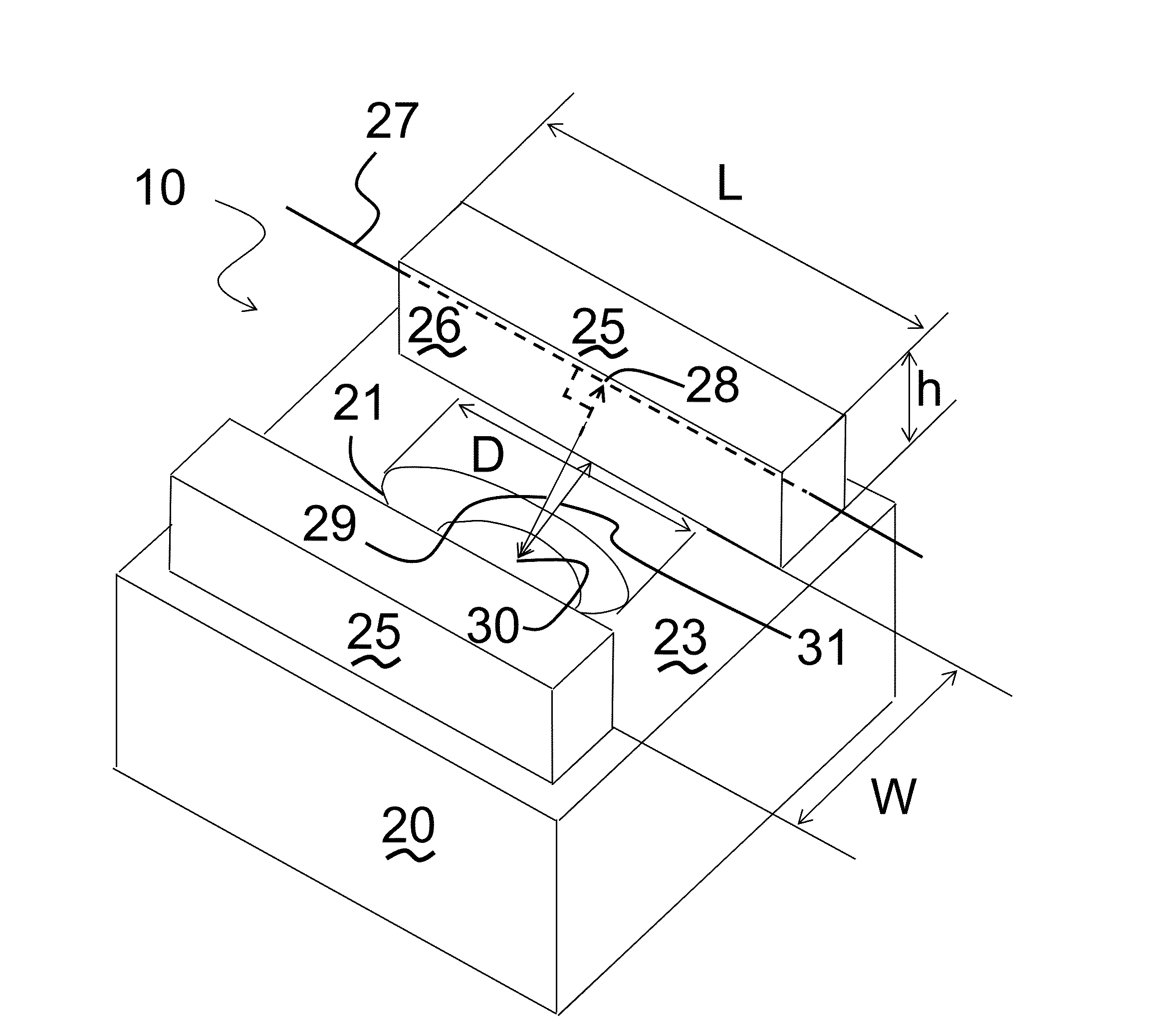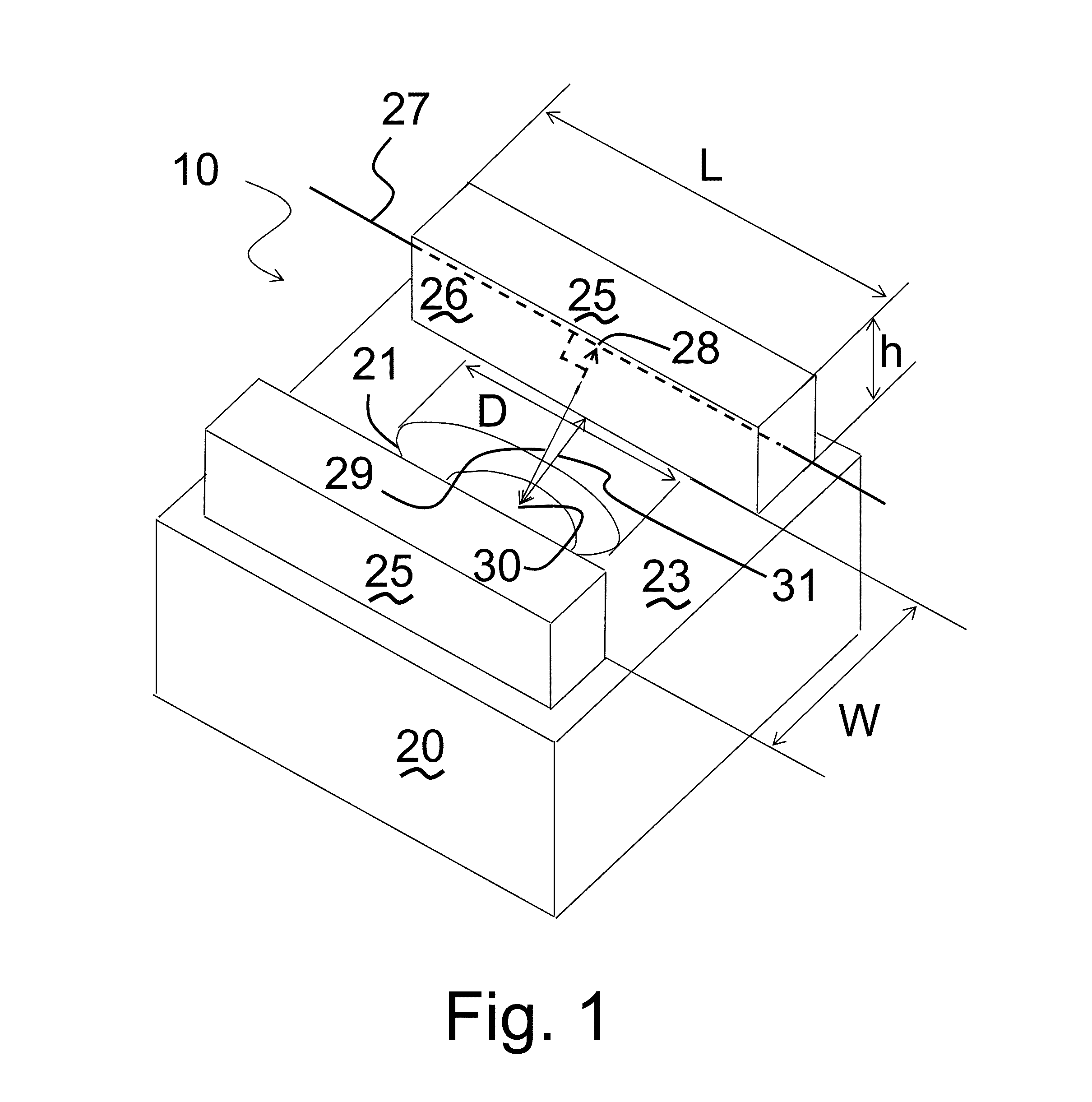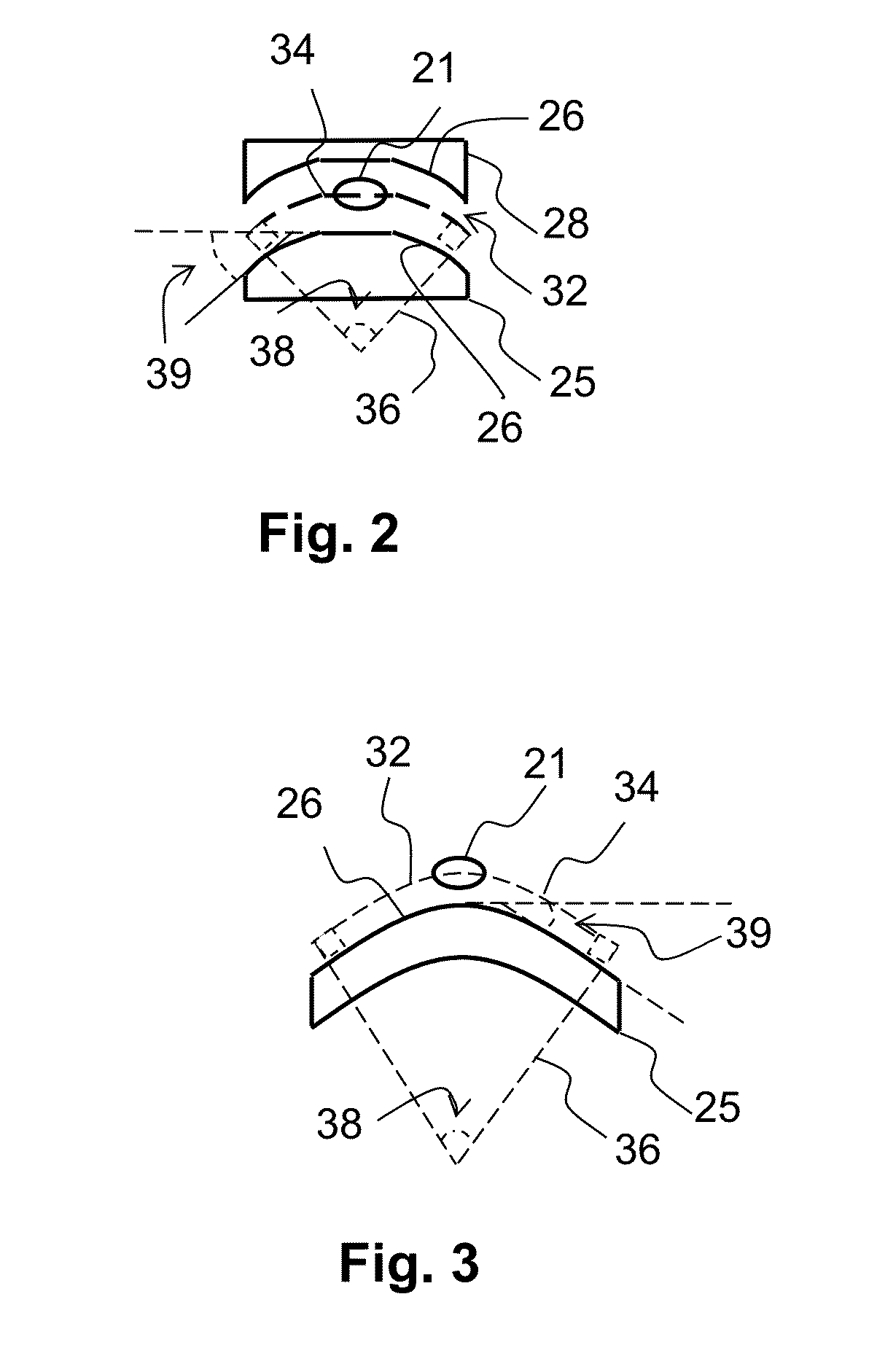Double entry channel ladle bottom
a technology of ladle bottom and double entry, which is applied in the field of refractory articles, can solve the problems of molten metal and slag to mix, slag contamination from both floating and entrained slag, and difficulty in casting or refining operations, so as to reduce the amount of discarded metal, and minimize the effect of vortexing
- Summary
- Abstract
- Description
- Claims
- Application Information
AI Technical Summary
Benefits of technology
Problems solved by technology
Method used
Image
Examples
Embodiment Construction
[0034]FIG. 1 shows one embodiment of a ladle block 10 of the present invention. The ladle block 10 contains a ladle block body 20, through which an outlet bore 21 passes downwardly from a ladle block body upper surface 23. Walls 25 extend upwardly from ladle block body 20. Walls 25 are disposed on opposite sides of outlet bore 21. Walls 25 are separated by an outlet channel having a width of W. Walls 25 have a height denoted by h. Walls 25 have a length denoted by L. Outlet bore 21 has a main dimension denoted by D. Wall interior surface 26 is the portion of wall 25 facing the volume above outlet bore 21.
[0035]Outlet bore 21 may have an entrance in ladle block body upper surface 23 in the shape of a circle or in the shape of an oval. The entrance of outlet bore 21 may be circular, or may describe an oval. The main dimension D of outlet bore 21 may be parallel to the length L of walls 25. The surface of outlet bore 21 descending from ladle block body upper surface 23 may include a fr...
PUM
| Property | Measurement | Unit |
|---|---|---|
| Angle | aaaaa | aaaaa |
| Angle | aaaaa | aaaaa |
| Angle | aaaaa | aaaaa |
Abstract
Description
Claims
Application Information
 Login to View More
Login to View More - R&D
- Intellectual Property
- Life Sciences
- Materials
- Tech Scout
- Unparalleled Data Quality
- Higher Quality Content
- 60% Fewer Hallucinations
Browse by: Latest US Patents, China's latest patents, Technical Efficacy Thesaurus, Application Domain, Technology Topic, Popular Technical Reports.
© 2025 PatSnap. All rights reserved.Legal|Privacy policy|Modern Slavery Act Transparency Statement|Sitemap|About US| Contact US: help@patsnap.com



